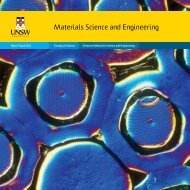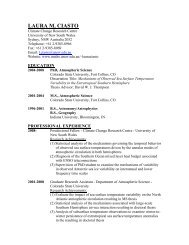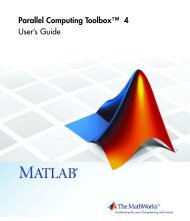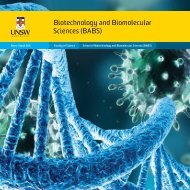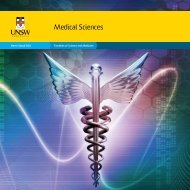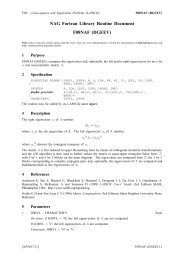2011 Postgraduate Research Competition - UNSW Science - The ...
2011 Postgraduate Research Competition - UNSW Science - The ...
2011 Postgraduate Research Competition - UNSW Science - The ...
Create successful ePaper yourself
Turn your PDF publications into a flip-book with our unique Google optimized e-Paper software.
Page |45<br />
<strong>The</strong> Potential of Anti-Psychotics and<br />
Statins as Chemotherapeutics<br />
Nirmani Wijenayake G and Louise Lutze-Mann<br />
School of Biotechnology & Biomolecular <strong>Science</strong>s<br />
Abstract<br />
Glioblastoma Multiforme (GBM) is a malignant form of cancer that is difficult to treat. <strong>The</strong><br />
median survival of a patient with GBM is only 1 year. In most cases, surgical resection is<br />
usually followed by radiotherapy and chemotherapy with Temozolomide, one of the<br />
approved drugs for the treatment of GBM. Unfortunately, large number of patients develop<br />
resistance against Temozolomide and other chemotherapeutics are unavailable for<br />
treatment due to their inability to cross the blood brain barrier. <strong>The</strong>refore, there is a need for<br />
new potential chemotherapeutics against GBM.<br />
Meta-analysis of cancer in schizophrenic patients suggests a lower incidence of some<br />
cancers leading to the hypothesis that antipsychotic drugs taken regularly by these patients<br />
may have the ability to act as chemotherapeutics. We have demonstrated the significant<br />
effect of number of antipsychotics in vitro with the use of short term cell viability assays and<br />
long term clonogenic assays. Previous studies indicated that cytotoxic effects of<br />
antipsychotic drugs maybe due to blockage of intracellular trafficking of exogenous and<br />
endogenous cholesterol. We have demonstrated the ability of lipophilic, cholesterol lowering<br />
statins to induce GBM cell death in vitro. By combining antipsychotics with statins, we have<br />
demonstrated an increased cytotoxicity of antipsychotics.<br />
Our results established antipsychotics and statins as potential chemotherapeutic agents<br />
against GBM. <strong>The</strong> IC50 and LD50 values for these drugs are smaller and far superior<br />
compared to the current treatment, Temozolomide, increasing their value in the treatment of<br />
GBM.<br />
Abstract<br />
Restoring Access to Embellistatin<br />
Justin Nash and Jonathan Morris<br />
School of Chemistry<br />
Cancer is a major cause of death worldwide and it is characterised by uncontrolled rapid<br />
cell growth. Disruption of cancer can be achieved by the use of drugs which can selectively<br />
target and inhibit processes vital to the growth of cells.<br />
Microtubules are an established target for treatment as they are involved in many aspects of<br />
cell growth and are vital for the growth of new blood vessels. While treatments targeting<br />
these biological processes have been developed, there is an ever evolving resistance to<br />
current drugs and a need for a more active and selective therapeutic.<br />
<strong>The</strong> natural product embellistatin represents a promising step forward as it targets both<br />
microtubules and angiogenesis. This compound is no longer available from its natural source,<br />
which has stymied progress. We are developing a total synthesis which will allow us to<br />
prepare the compound from readily available materials. By restoring access to this important<br />
molecule, we will be able to develop it as a new therapeutic agent.<br />
| science + society



